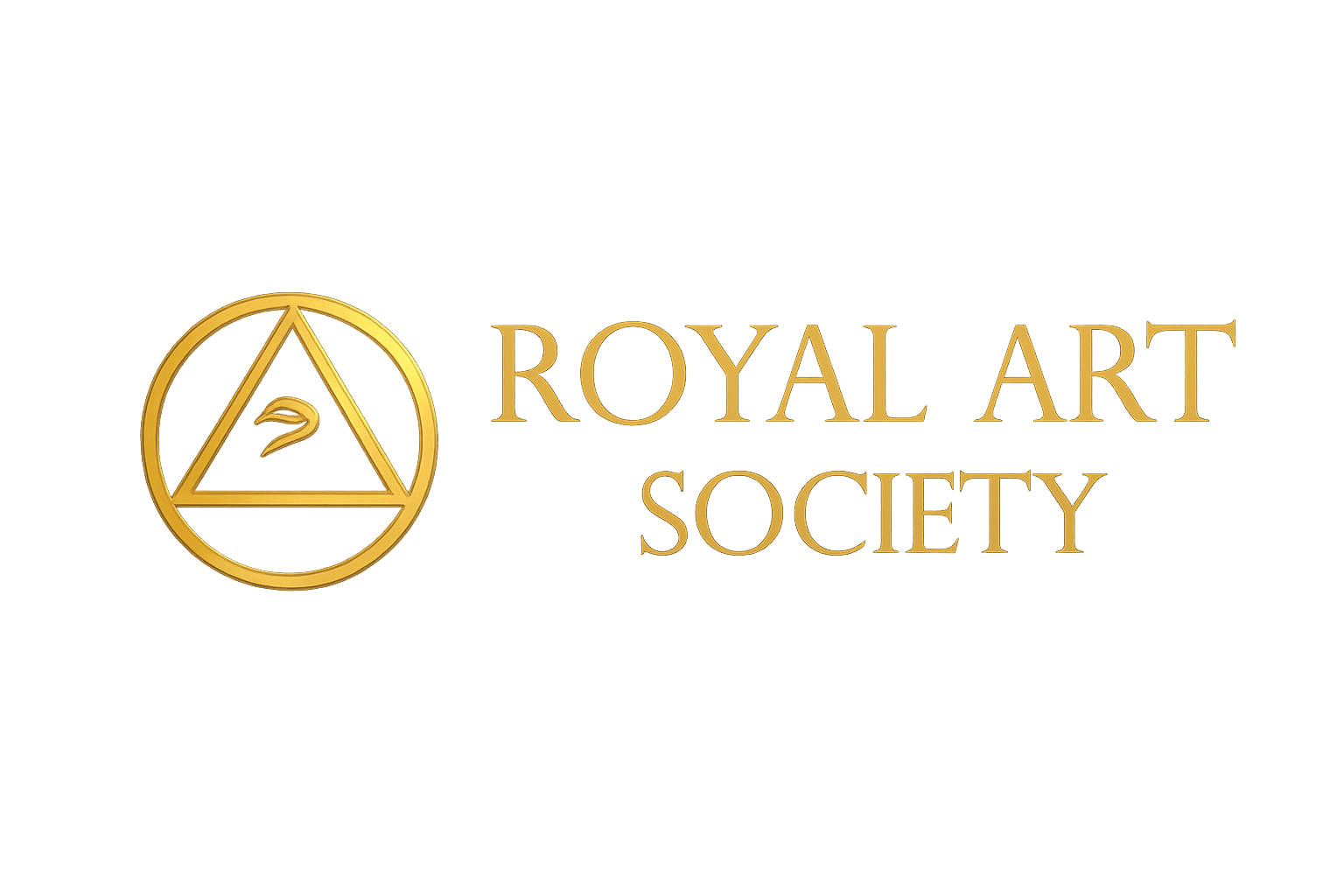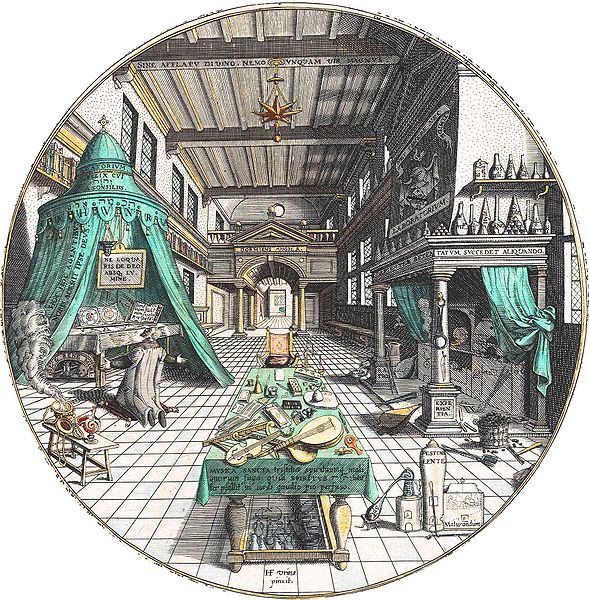
Experimental Alchemy
The Enlightened Homo sapiens
Meditation, the central practice of the Royal Art, may be undertaken at any time and in any posture, though it is ideally done seated in stillness and silence. Each meditation is at once a ritual and a scientific experiment: a symbolic enactment of human unity with the totality of existence. This state of oneness—experienced directly and reproducibly—is true immortality, known across traditions as Enlightenment or Illumination. It is the foundational hypothesis of alchemy, continually tested through repeated demonstration.
This practice addresses the root of disorder at the heart of many preventable ills that afflict humanity today. The hi-tech meditations of the Royal Art Society are not merely personal exercises but a form of holistic medical technology, designed to engage the interconnected crises of religion, education, politics, economics, and ecology.
Modern science increasingly recognizes the role of visualization in health and psychology. Meditations that envision the initiate’s own anatomy at the center of the cosmos are emerging in both scientific and spiritual communities of the West. Such practices allow for the withdrawal of the senses from external distractions and the organization of knowledge within a cosmic framework.
The imperative is clear: follow the sources, conduct the research, and educate yourself. The foundation of the Royal Art Society program is therefore Experimental Alchemy.
Experimental Alchemy of the Royal Art Society
The Royal Art Society applies the five steps of the scientific method directly to symbolic alchemy. Each rite, meditation, or visualization is treated as an experiment, its effects observed, tested, and recorded. The method proceeds in five classical steps:
- Observation. The alchemist begins by noting natural phenomena, inward experiences, or symbolic correspondences.
- Hypothesis. Predictions are formed regarding the effects of a given practice or elixir.
- Experiment. The meditation or ritual is undertaken under controlled, repeatable conditions.
- Analysis. Data and experiences are examined to determine whether the hypothesis holds, generating further insights.
- Verification. Findings are reported and shared, inviting repetition by others to confirm or challenge the results.
In this way, alchemy is not speculation but a living science, grounded in personal experiment and communal verification.
Today, science itself has expanded beyond the classical dyad of theory and experiment. Computational science—the use of algorithms, modeling, and simulation—has emerged as a third mode, complementing observation and analysis. In the Royal Art Society, symbolic computation and guided visualization function in a similar way: as tools to model, test, and refine our understanding of mind, life, and cosmos.
Outline of the Philosophy of Science
The Royal Art situates itself within a broader philosophy of science, which traces the continuum from metaphysics to experimental practice. The following outline reflects the Society’s integrated curriculum:
- Metaphysics / Theology
- Logic
- The Sciences:
- Mathematics: Arithmetic, Algebra, Geometry, Trigonometry, Calculus (dynamics: stable, periodic, chaotic), Topography
- Physics
- Chemistry
- Astronomy
- Climatology / Meteorology
- Geology / Earth Resources
- Biology
- Anthropology / Sociology
- History / Political Science / Economics
- Ethics
- Anatomy / Physiology / Psychology / Medicine
- Rhetoric
- Royal Art, or the New Science of the Observer: symbolism, meditation, and ritual
- Mathematics: Arithmetic, Algebra, Geometry, Trigonometry, Calculus (dynamics: stable, periodic, chaotic), Topography
- Narratives of Knowledge:
- Story of the Cosmos
- Story of Life in the Cosmos
- Story of the Cosmos
- Philosophy of Science
- Scientific Philosophy of Life and the Ideal
- Goals and Schedule
- Scientific Human Law and Government
This framework unites the analytic methods of modern science with the contemplative methods of symbolic alchemy, forming a comprehensive vision of knowledge and life.

Theories of Experimental Alchemy: Intuition, Logic, and Science
Science is not a collection of immutable facts but of theories, each subject to continual testing and revision. The first theory of inner alchemy is the Theory of Intuition, Logic, and Science: intuition forms the foundation of logic, and logic forms the foundation of science. Neither intuition, logic, nor science by themselves constitute absolute proof—they are progressive modes of knowing. Definition provides the groundwork of knowledge, while demonstration shows the natural laws underlying all phenomena.
In practice, experimental alchemists are experimental scientists. They design protocols according to logical principles, test hypotheses through experiment, and refine theories based on evidence. Alchemical elixirs—rituals or methods of meditation—function as hypotheses. Each may be tested, observed, and verified.
Bias remains one of the great obstacles to knowledge. Human beings are shaped by culture, desire, and expectation, and these biases often distort observation and lead to harmful choices. The scientific method seeks to minimize bias through careful definition, repeatable experiments, and critical peer review. Alchemists likewise apply these methods to inner experience, designing not only verbal hypotheses but also mathematical, logical, or visual models to represent their work and generate new insights.
The observer is the foundation of this process. An observer is a sentient being who perceives. Thus the first alchemical observation is the recognition of an observer, and the first hypothesis is that an observer exists. The first experiment is to test this by cultivating awareness: remaining still and silent, observing one’s own consciousness. The conclusion is self-evident—where the question “does an observer exist?” is posed, an observer must already exist to ask it.
From this point, the alchemist expands inquiry. Elixirs may include movement, sound, or symbolic ritual, all of which add to the data. Logic then analyzes the evidence. Self-awareness remains the cornerstone: every experiment, however elaborate, reinforces the truth that observation depends on the observer. In this sense, symbolic alchemy grounds its theories in the simplest and most irreducible of facts—awareness itself.
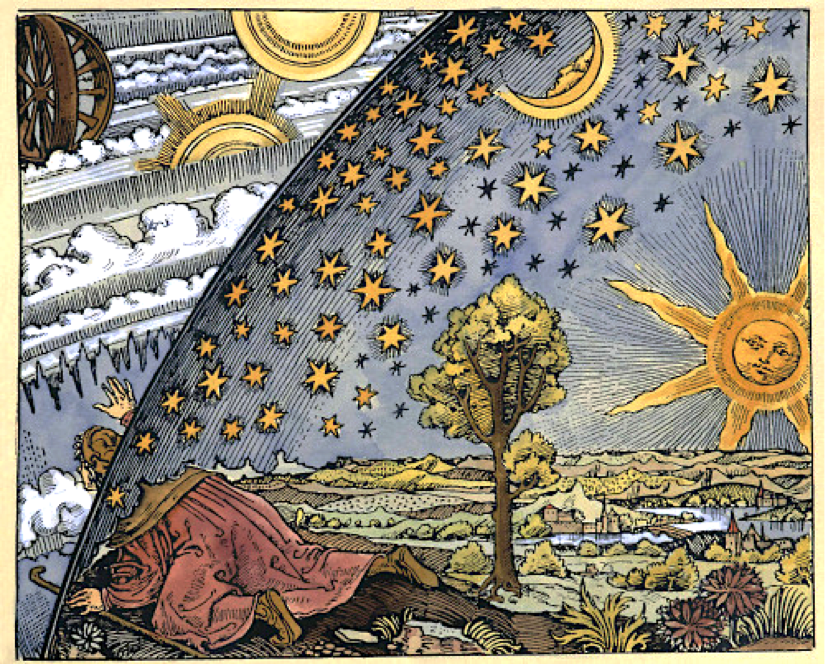
Internal Alchemy, “Spirit,” and Superstition
The Royal Art Society does not endorse supernatural speculation about the macrocosm and microcosm. Religious language about “divine” or “spiritual” beings is dismissed unless it can be understood as metaphor or psychological archetype aligned with natural law.
In alchemy, “Spirit” refers to the imagined life-force common to many cultures: qi in Chinese, prana in Indian yoga, ruach in Hebrew, pneuma in Greek, spiritus in Latin, élan vital in French. Alchemists associate this quintessence with Mercury, the quicksilver principle of transformation, cultivation of which culminates in consciousness and enlightenment—the Philosopher’s Stone.
Scientific evidence does not support life-force as a tangible substance. It may be more accurate to understand “spirit” as a construct, a symbolic way to speak of the elements of health, vitality, and awareness. As such, it is useful in guided visualization and meditation. Similarly, a “spirit” may represent an archetype or natural force: the spirit of love, the spirit of the sun, the spirit of law. These names are not entities but personifications of human and cosmic realities.
Do the Work
The essential caution is this: do not judge internal alchemy without practice. Skepticism is natural, and indeed required, but it must be active skepticism—testing claims through experiment. Reading about alchemy without practicing is like attempting to understand love or war without ever experiencing them. Opinions formed without experimentation are at best irrelevant and at worst misleading.
Most seekers begin their quest under the influence of superstition, mythology, or religion. Religious visions—whether spontaneous or cultivated—can be powerful, but they are reliable only when they accord with reality. Alchemy recognizes both visions (spontaneous imagination) and visualizations (willed imagination), and uses them as tools, not as truths. The alchemical worldview transcends superstition but does not defy reason; it embraces imagination but tests it against logic and science.
The intent of the founders of the Royal Art Society is to investigate the long-term benefits of its meditations and way of life—for memory, health and fitness, prosperity, sustainability, and overall well-being. Special attention is given to studying correlations between quality-of-life measures and the Seven Seals meditation, compared with the results of religious or other contemplative systems. The ultimate aim is to ground symbolic alchemy not in belief or conjecture, but in measurable outcomes that can guide both individuals and society toward illumination.
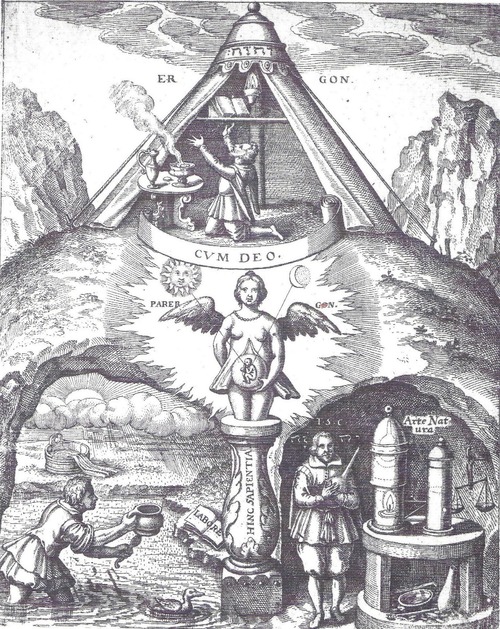
A Powerful Laboratory Temple
Carl Sagan envisioned it. Sam Harris has argued for it. Countless hands and eyes are ready to build it. The time has come for the birth of a new sanctuary: the Temple of the Royal Art, a secular laboratory of alchemy and illumination.
Human beings yearn for rituals that are at once deeply moving, intellectually rigorous, and universally relevant—rituals that celebrate the history of the cosmos, the emergence of life, the story of humanity, and the achievements of civilization. The civilized Homo sapiens needs more than private belief or academic knowledge: we need shared experiences of wonder, awe, and illumination.
We envision meditation and mnemonic practice brought down to a science—taught in schools, demonstrated in public, and celebrated with the same energy as concerts, festivals, or religious services. Imagine grand halls, cathedrals, or stadiums alive with light, sound, and symbol—spaces dedicated not to dogma, but to reason, science, and the art of transformation.
The method begins at the foundation: with nothing but the cosmos itself. Using deduction and scientific observation, we identify the bare essentials of a happy, enlightened, and productive human life. We study the full range of human necessity: fresh air, clean water, healthy food, sunlight, security, sleep, exercise, clothing, and shelter. We then expand into higher needs—healthcare, education, economics, politics, leisure, art, philosophy, and fraternity—exploring both their provision and their deprivation.
In this curriculum, health and medicine receive particular attention, extending to psychological modalities such as sound therapy, color therapy, and meditation. Quality of life is examined in all its dimensions: labor and leisure, freedom and responsibility, charity and taxation, education and culture, art and music, gardening and environment, and even the simple grace of a window view onto the natural world.
The Twelve Studies
The Royal Art Society organizes this knowledge into a systematic program: the Twelve Studies of the Alchemist, which together form a holistic education:
- The Physical Environment
- Meditative Posture
- Breathing
- Relaxation
- Concentration
- Health and Healing
- Visualization
- Building Worldview
- Mnemonic Mapping
- Understanding
- Wisdom
- Ritual and Mysticism: Embracing the One
Grounded in data from Gallup, the World Bank, the World Health Organization, and other research bodies, the Society evaluates quality-of-life measures across traditions and cultures. We compare philosophies, rituals, and lifestyles from Yoga, Buddhism, Daoism, Judaism, Christianity, Islam, Freemasonry, Scientific Illuminism, Jungian psychoanalysis, and the Royal Art itself. Experiments may be conducted within the Society, with findings systematically recorded.
The Royal Art Society examines reports on quality-of-life measures across populations, and reviews scientific studies of ritual, meditation, and their role in human flourishing.The architecture and rites of the Royal Art Society remain symbolic, not literal: therapeutic and inspiring visualizations, mnemonic frameworks, and methods of meditation. They are designed to heal, to educate, and to awaken.
The Temple of the Royal Art is not a monument to the supernatural, but a laboratory of meaning—a place where science, art, and ritual converge to illuminate the human path.
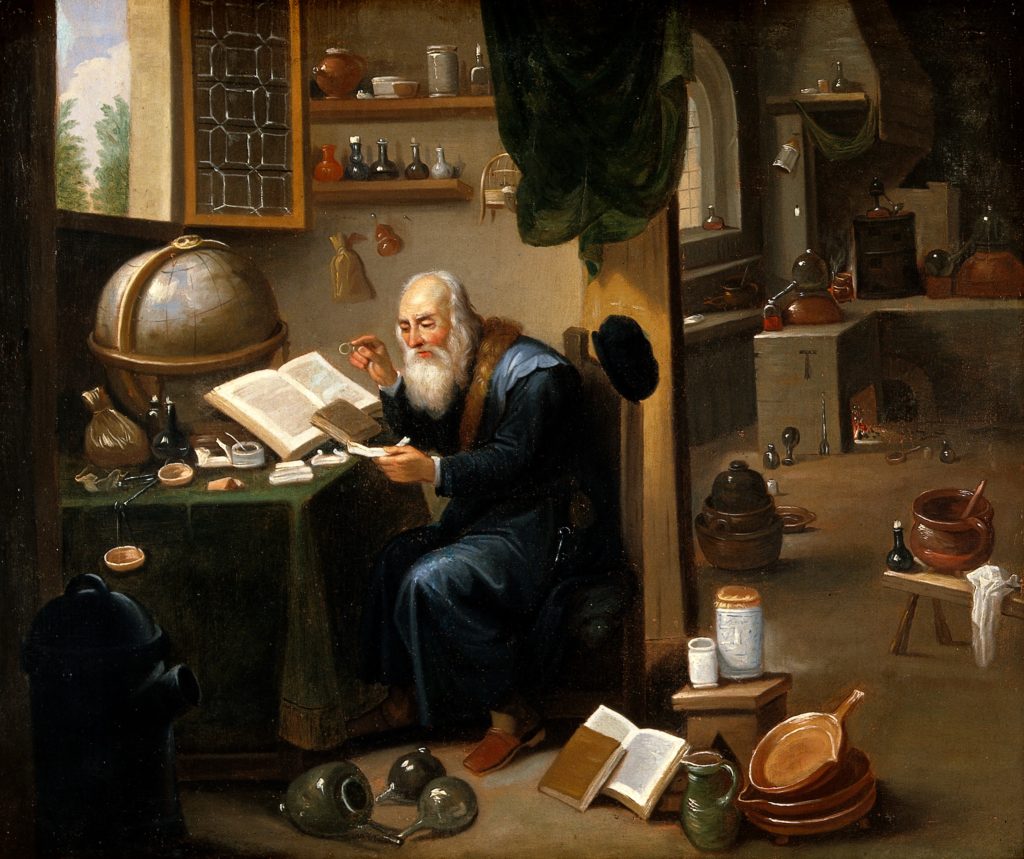
The Alchemical Laboratory
Environment creates genius. It nurtures love, imagination, vocabulary, and the skills of survival. Human beings learn by example, and the alchemist therefore attends carefully to their surroundings. A proper environment should be healthy, pleasant, intellectually stimulating, and inspiring. It should be enlivened by music—whether classical, baroque, sitar, or other uplifting forms—and animated by the presence of life.
Adequate light, food, water, and fresh air are essential. For just as environment can cultivate genius, it can also destroy it. The work of alchemy therefore includes safeguarding the methods of preserving clarity and creativity, even under hostile conditions.
The Royal Art Society laboratory or temple is neither a religious sanctuary nor an academic lecture hall, but a place for direct observation. It is a laboratory in the truest sense: a space where symbolic experiments are tested through repeated practice. Inner alchemy may be defined as a system of chemistry in allegory, where the quest to transform base metals into gold serves as a metaphor for transforming the dross of life into empowerment, illumination, and benevolence. In this sense, the Royal Art Society is both an alchemical order and a secular fellowship of experimenters.
The Chinese Daoist temple is called a guan—literally, “to observe.” The alchemist’s laboratory is such a guan: a sanctuary of observation rather than theology. Western alchemists likewise relied on experimentation and repeated observation, laying the foundations of modern science. The laboratory was their birthplace of discovery, and science has remained faithful to that spirit of inquiry: always searching for truth, always evolving with new evidence.
Thus the Alchemist’s Laboratory is a secular sanctuary. Its philosophy resonates with the scientific humanism of figures like Carl Sagan and David Attenborough, and aligns with the non-superstitious traditions of Stoicism, Confucianism, Buddhism, Daoism, and even the early vision of the United Nations as a spiritual but non-sectarian institution. Any place of worship—synagogue, church, mosque, or temple—can support or even become an alchemical laboratory. The work of liturgy, music, hierarchy, and service to community may continue alongside this secular doctrine of observation, symbol, and transformation.
At times, the alchemist must return to nature without reservation: setting aside possessions and attire, withdrawing from civilization, and surrendering to the living earth. In such retreats, one rediscovers natural peace and harmony. Silence, openness, and attentive listening reveal the secrets of nature. By releasing every thought and perspective, the observer embraces the One, the Source. Genius arises not from clinging but from surrender, when the threshold of human awareness expands to meet the infinite.
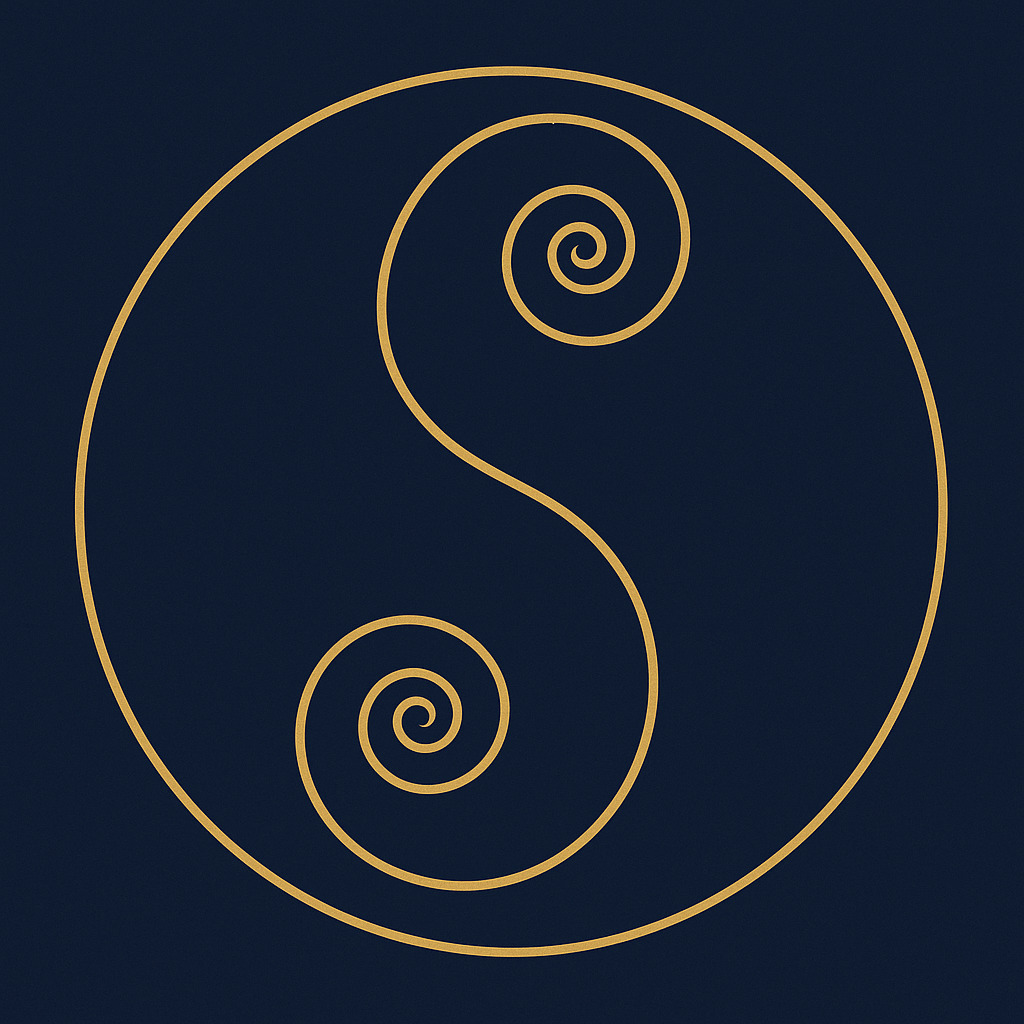
The Architecture of the Royal Art
The Royal Art describes six types of temple, three conceptual and three structural, all of which together form the Alchemical Laboratory.
- The High Temple, Middle Temple, and Lower Temple correspond to Spirit, Mind, and Body.
- The Inner Temple, Central Temple, and Outer Temple are the three partitions of the ideal temple space.
Together, these six are aspects of a single symbolic structure: the Temple of the Royal Art.
The High Temple is the archetypal temple of Homo sapiens—a prototype for meditation, visualization, and ritual design. Though it will evolve with experimentation, it serves as the ideal model for the alchemist’s work.
The Middle Temple is unique to each practitioner: the temple seen within the mind’s eye during meditation. It is subjective, shaped by imagination, memory, and symbol.
The Lower Temple is the physical space of practice, where rituals are enacted. This workspace must be built in harmony with heaven and earth, with the human being (Homo sapiens, gender-neutral) as the measure of balance. When consecrated, this space is called the Temple of Heaven.
Thus the architecture of the Royal Art spans both inner and outer dimensions: the spirit, mind, and body of the alchemist; and the inner, central, and outer compartments of the temple. Together, they form a complete sanctuary for the Great Work of transformation.
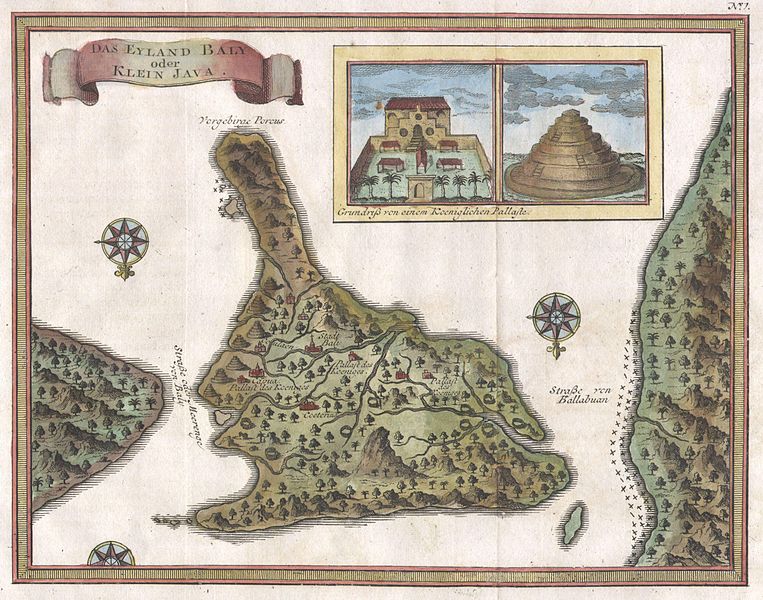
Design of the Temple
The Lower Temple is ideally designed in accordance with the High Temple, the archetypal model of the Royal Art. Its proportions are measured by the International Standard System, ensuring harmony with universal scientific principles. Where a large space is available, the layout may draw inspiration from the Balinese village scheme, in which every community mirrors the macrocosm through three divisions:
- Kaja (high), oriented toward the sacred mountains.
- Kelod (low), oriented toward the sea.
- The Center, balancing the two.
Each section holds a temple: the kaja temple aligned with Brahma the Creator, the central temple with Vishnu the Preserver, and the kelod temple with Shiva or Durga, deities of transformation. The Royal Art Society interprets these divisions as the Inner, Central, and Outer Temples, each corresponding to stages of symbolic alchemy.
Within the High Temple—the ideal structure—these are expressed as:
- The Inner Temple: the Treasure of the Secret Vault, the Thrones, and the Altar.
- The Central Temple (Great Hall): the Banquet Table.
- The Outer Temple (Courtyard): the Sacred Tree and the Tombstone.
The Middle Temple is personal and inward, visualized uniquely by each alchemist. The Lower Temple, the physical laboratory, may likewise be divided into three parts:
- An inner sanctum or shrine.
- A middle space for purification, preparation, and communal life (kitchen, dining, storage).
- An outer courtyard, open and secular.
The High Temple is conceived as a double spiral, “S-shaped,” with three and a half coils proportioned according to the golden mean. Symbolically, it may be expressed as two circles within a larger circle of twice their radius. At its highest point lies the Treasure of the Secret Vault, a perfect cube beneath the earth.
At the center of the upper circle stands the Altar of the Royal Art. At its outer ends stand the Assistants, while the Sacred Tree marks the center of the lower circle. Each circle is bordered by four flames at the cardinal points: four candles on pedestals surrounding the Altar of the Royal Art.
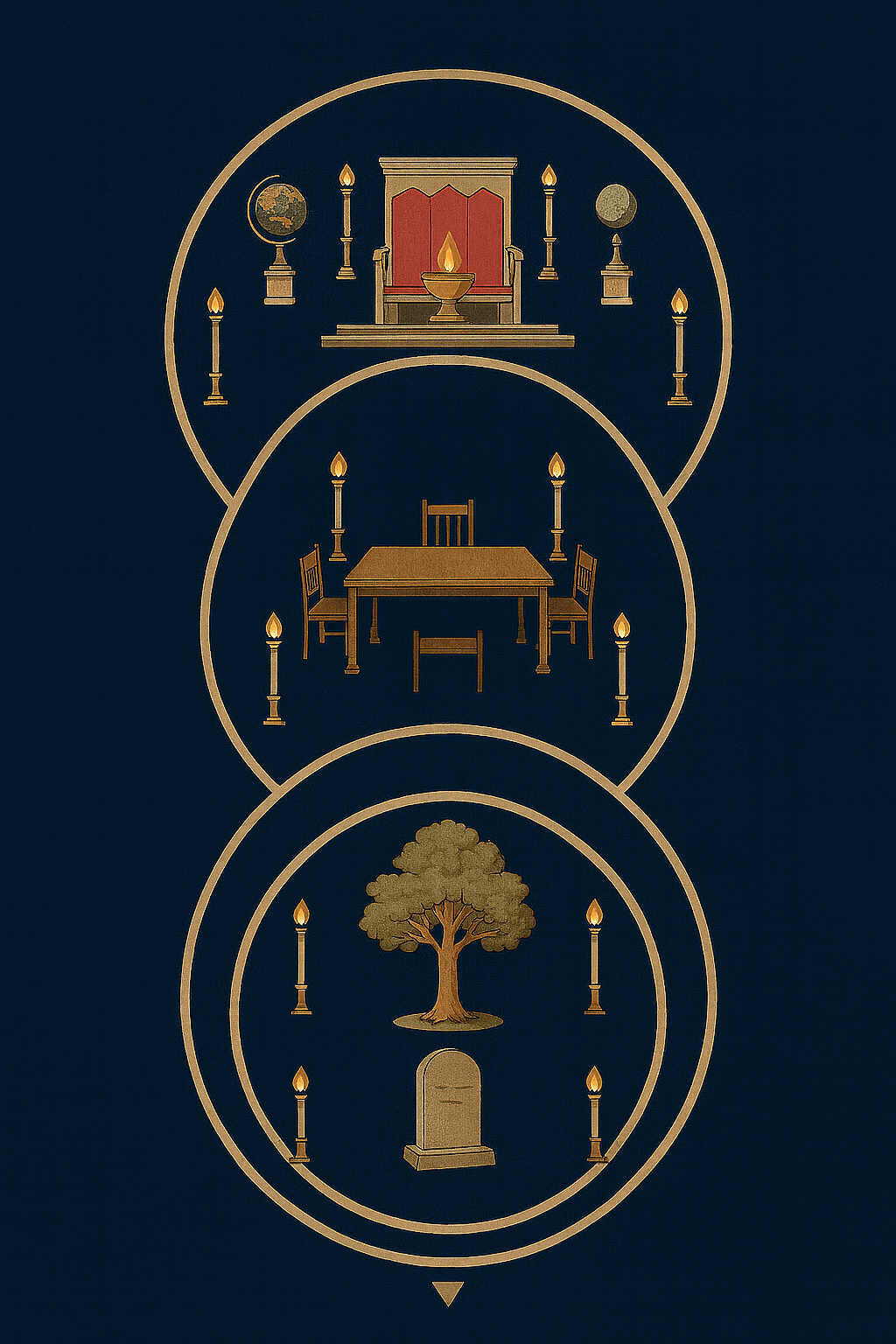
Furnishings of the Temple
In visualization of the Central Temple, the Sacred Fire is fanned by the nine muses—the patronesses of arts and sciences—and is accessible only to the purified. The Sacred Fire upon the Altar is the alchemist’s furnace, the athanor. The vessel above it, the beaker, is the Holy Grail or Cauldron of Inspiration, boiling the recipe of the elixir. In the Lower Temple this may be represented by a single flame, a bowl of liquid potpourri, or an actual ritual furnace.
The details of the High Temple (the ideal) should be reflected in the Middle Temple (the mind) and, where possible, in the Lower Temple (the physical space). The Temple itself is a Temple of Memory. Its eight points are sealed with Dragon Seals, inscribed with a system of correspondences. The twelve zodiacal signs encircle the walls to represent the macrocosm. Seven steps ascend to the Holy Throne, also called the Dragon Throne or Throne of the High One.
Before the Throne stand two pillars: one surmounted by the terrestrial globe, the other by the celestial. On the left hand of the High One rests a pedestal bearing the cup of wine, the cup of water, the plate of bread, and the vial of oil. On the right hand rests another pedestal, the Ancestral Shrine, holding the Book of the Royal Art, incense, and ceremonial bell beneath the symbol of Minerva’s owl—emblem of wisdom, not an idol of worship. The sword lies to the left, the staff or spear to the right.
The Treasure of the Secret Vault contains everyday implements veiled in white linen: a backpack, first aid kit, sewing kit, matches, rope, pan, fishing line and hooks, rain cloak, gourd of water, sun and moon calendars, compass, thermometer, sundial, clock, ruler, square and compasses, mirror, pen and paper, pan flute, stone, stick, bone, silver ore and coin, knife, and the Book of the Royal Art. In their ordinariness, these objects remind the alchemist that the sacred and the mundane are one.
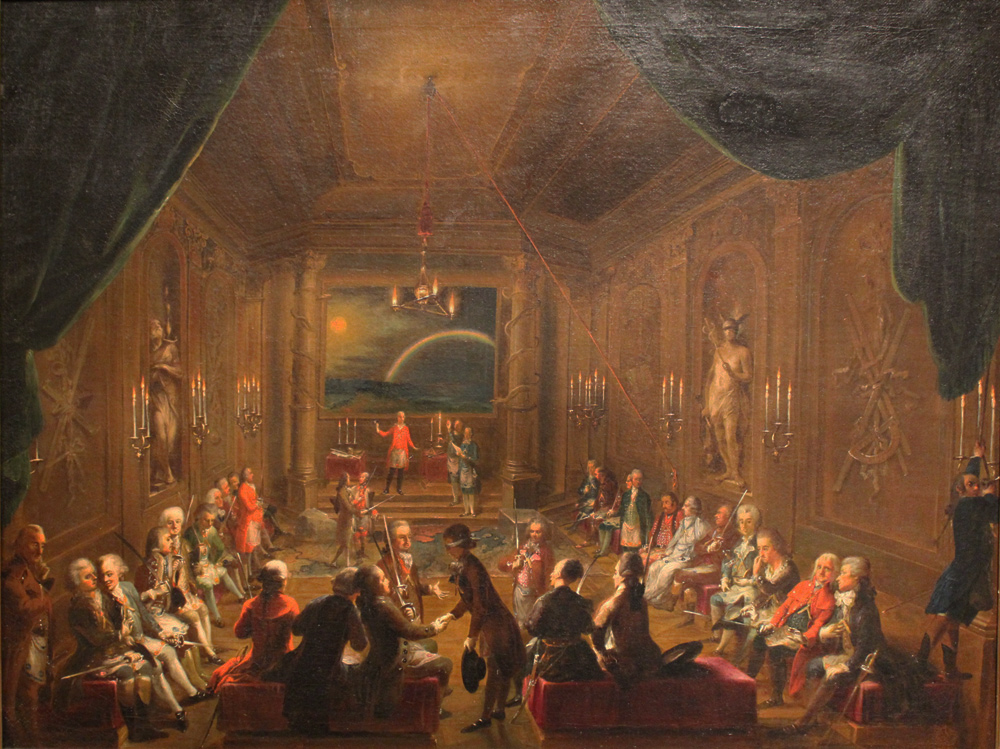
The Officers of the Alchemical Rite
Royal Art Society rituals, whether in physical space or visualization, include seven officers, each embodying a planetary archetype and element of the alchemical process:
I. Saturn — Lead.
The High One or Commander-in-Chief in the East. Bears the armillary sphere and a scepter or staff.
II. Jupiter — Tin.
The Master of the Temple (MT) or Black Knight (BK), Secretary in the North. Carries pen and paper or equivalent.
III. Mars — Iron.
The Black Assistant (BA) or Treasurer in the North. Wears a chain with key, holds a gold coin in the left hand and a scourge in the right.
IV. Venus — Copper.
The White Assistant (WA) or Archivist in the South. Holds balances in the left hand and a double-edged sword, knife, or athamé in the right.
V. Mercury — Quicksilver.
The Master of Ceremonies (MC) or Prime Minister in the East. Custodian of the Book of International Law, the Book of the Royal Art, and other texts, resting on a cushion.
VI. Luna — Silver.
The Chymical Bride (CB), Minister of Earth and Sea in the West, dressed according to the nature of the ceremony.
VII. Sol — Gold.
The White Knight (WK), Minister of Heaven and Light in the South.
Practical Guide: The Temple and Its Officers
The Temple of the Royal Art
The Temple exists on three levels:
- High Temple (Ideal): The archetypal model, arranged in a double spiral (two circles within a larger circle of twice their radius), aligned with the golden mean.
- Middle Temple (Mind): The inner, personal temple seen in meditation and visualization.
- Lower Temple (Earth): The physical ritual space, ideally reflecting the High Temple’s design.
Layout of the Lower Temple
- Inner Temple (Sanctum): Altar, Treasure of the Secret Vault, and Thrones.
- Central Temple (Great Hall): Banquet Table, Sacred Fire, and fellowship space.
- Outer Temple (Courtyard): Sacred Tree, Tombstone, and secular gathering area.
Key symbols include:
- Altar of the Royal Art: Center of the Inner Temple, surrounded by four candles at the cardinal points.
- Sacred Fire / Athanor: Ritual flame or symbolic furnace for elixirs.
- Holy Throne (Dragon Throne): Seven steps above, flanked by two pillars with terrestrial and celestial globes.
- Treasures of the Secret Vault: Covered objects representing the unity of the sacred and the ordinary (tools, books, instruments, daily necessities).
The Seven Officers of the Royal Art
Each officer embodies a planetary archetype and role in the alchemical process:
- Saturn (Lead) – The High One, Commander-in-Chief (East)
- Carries scepter/staff and armillary sphere.
- Carries scepter/staff and armillary sphere.
- Jupiter (Tin) – Master of the Temple / Black Knight (North)
- Secretary, with pen and paper.
- Secretary, with pen and paper.
- Mars (Iron) – Black Assistant, Treasurer (North)
- Wears chain with key, holds coin (left) and scourge (right).
- Wears chain with key, holds coin (left) and scourge (right).
- Venus (Copper) – White Assistant, Archivist (South)
- Holds balances (left) and sword/athamé (right).
- Holds balances (left) and sword/athamé (right).
- Mercury (Quicksilver) – Master of Ceremonies / Prime Minister (East)
- Keeper of the Book of the Royal Art and other texts.
- Keeper of the Book of the Royal Art and other texts.
- Luna (Silver) – Chymical Bride, Minister of Earth and Sea (West)
- Dressed according to the ritual.
- Dressed according to the ritual.
- Sol (Gold) – White Knight, Minister of Heaven and Light (South)
- Embodiment of illumination.
- Embodiment of illumination.
How to Use This Guide
Whether enacted physically or mentally, the aim is the same: to align the microcosm (the self) with the macrocosm (the cosmos) through the symbolism of the Royal Art.
In ritual enactment, officers take their stations in the Temple, bearing the symbolic tools listed.
In visualization, imagine the Temple as described: the spiral plan, the Altar at center, the Sacred Fire, and the Throne. See the officers in their stations, each embodying their planetary principle.
The Elixir of the All-Seeing Eye of the Royal Art Society: Rite of the Immortal Empire, Inner Temple and Holy Throne
The Politics of Alchemy
Alchemy, in its symbolic and scientific form, is aligned with secular humanism. It affirms that the highest quality of life emerges where reason, science, and human rights guide society, not superstition or dogma. The evidence is clear: the most prosperous, equitable, and peaceful nations today—Scandinavian countries, France, Canada, Australia—are also among the most secular.
By contrast, most of the world’s people still live under conditions of limited religious freedom, where government is corrupted by dominant faiths, and where communities remain divided by religious conflict. In many regions, people are persecuted or even killed for their beliefs.
In the United States, for example, despite constitutional promises of separation of church and state, money still reads “In God We Trust”, religious institutions are exempt from taxes, and no openly atheist has ever been elected to high national office. In Britain, the Church of England remains established. Even in countries that pride themselves on democracy, religion continues to exert political power.
Secularism cannot be blamed for the failures of governments still dominated by religious majorities. In time, scientific humanist democracy—a government grounded in evidence, ethics, and the dignity of all—will replace the chaos of superstition and power politics. The Royal Art Society envisions and prepares for this future, offering a framework where ritual, meditation, and philosophy reinforce the values of reason, compassion, and justice.
Religion and Resistance to Science
Throughout history, conservative religious institutions have resisted science and law: opposing family planning, sexual and gender equality, and education about the origins of the universe and life. Even moderate nations, such as England or Indonesia, entrench official religions and restrict freedom of conscience. In parts of Africa and the Middle East, theocratic rule leaves little space for freedom at all.
The Age of Religion is passing. Its resources and cultural traditions may be honored, but fundamentalism is dangerous, destructive, and obsolete. The task of educators, scientists, and librarians is to encourage the comparative study of religion and science—voices such as Joseph Campbell, Carl Sagan, and Sam Harris—so that myths can be appreciated as cultural heritage without being mistaken for literal truth.
Science, Belief, and Transformation
The alchemist recognizes that the cosmos is one, that morality can be reasoned, demonstrated, and intuited, and that the mysteries of life can be experienced without mythology. Religious communities may preserve their traditions, but the broader secular community is already returning to temple-based meditation, fellowship, and contemplative practice, now grounded in science rather than superstition.
Future science will explore whether deeply indoctrinated beliefs can be shifted through reason and analysis. Already we know that analytic thinking reduces dogmatism, and that logical methods plant seeds of doubt where indoctrination once held sway. The Royal Art Society’s meditative and symbolic practices may one day serve as therapeutic tools in psychology—untying the knots of indoctrination and restoring clarity of thought.
Government, Extremism, and Reform
Comparative government is as important as comparative religion. Alchemists study historical regimes to understand how power, belief, and oppression have intertwined. The great lesson is that tyranny, whether secular or religious, breeds suffering, while freedom grounded in evidence-based governance promotes flourishing.
Islam and Christianity, the world’s two largest religions, remain politically dominant. Both harbor reformers and fundamentalists. As in the Islamic Golden Age, prosperity arises where diversity, critical inquiry, and science are valued. In the West, it would be wise to support reformers within religious communities who call for accountability, reason, and compassion. The Royal Art Society stands with those voices.
Toward an Integrated Humanist Future
There is no “one true god” and no “one true religion.” Humans interpret scripture selectively, shaped by culture and bias. This very malleability ensures religion will always be a source of debate, conflict, and, too often, violence. The Royal Art offers a different path: a universal practice rooted in science, meditation, and symbolic ritual, designed to unite rather than divide.
The choice before civilization is stark:
- Either preserve multiculturalism in its passive form—tolerating superstition and conflict in the name of tradition;
- Or advance secular scientific humanism as a shared foundation for peace and progress.
The Royal Art is one expression of this humanist mission: a science of spirituality and a spirituality of science, a philosophy that transforms conflict into contemplation, and superstition into illumination.
Conclusion: Redefining Faith, Founding a Secular Scientific Priesthood
Across cultures, religious services have evolved to meet the emotional and social needs of their communities. Some Buddhist temples adapt the theatrical energy of evangelical gatherings while retaining their chants, meditations, and visualizations of compassion and creation. Sufi mosques in the West blend ritual, comfort, and hospitality in ways parallel to contemporary Protestant churches. These examples show that form is flexible: ritual adapts to context, and what remains constant is the human longing for meaning, fellowship, and transformation.
What science demands of us, however, is honesty. Faith, in its traditional sense, must be redefined or left behind. Faith as blind belief is contrary to critical thinking, logic, and evidence. But faith, redefined as confidence in the methods of reason, as trust in evidence and the possibility of human progress, can be honored as a virtue.
The myths, scriptures, and symbols of the past may be preserved as cultural heritage, but no longer mistaken for literal truth. Religious communities can thrive as scientific fellowships—celebrating their art, music, literature, architecture, ceremonies, and moral traditions—while aligning their practices with the discoveries of science.
The Royal Art Society holds that temples, rituals, and sacred calendars still matter. They provide continuity, belonging, and space for reflection. But they must now serve the flourishing of an evidence-based global civilization. Communities may keep what is good: tight bonds, charity, music, architecture, poetry, meditations, and visualizations. Yet traditions must adapt whenever science reveals error or harm. A culture unwilling to do so has no future.
Here the Royal Art introduces a new calling: a secular scientific priesthood. Not a clergy of dogma, but a fellowship of teachers, healers, scientists, and philosophers who serve the public through evidence-based ritual, meditation, education, and civic responsibility. Their task is not to defend superstition but to translate science into meaning, to guide communities in aligning their lives with truth, and to provide ceremonies of birth, maturity, death, and remembrance grounded in knowledge rather than myth.
This work is political as well as spiritual. Without science in governance, societies falter. Without a scientifically literate electorate, democracy collapses. The Royal Art Society therefore insists that science must be brought into the heart of culture, law, and ritual, where once religion reigned. We are not abolishing temples; we are transforming them into laboratories of wisdom. We are not abolishing priests; we are transmuting them into guides of science, symbols of illumination, and stewards of human flourishing.
Faith is thus redefined: not faith in unseen gods, but faith in human reason, compassion, and the open-ended journey of discovery. The Royal Art is this redefined faith—a science of spirituality and a spirituality of science—and its priesthood is every man and woman who takes up the work of enlightenment in service of humanity.
